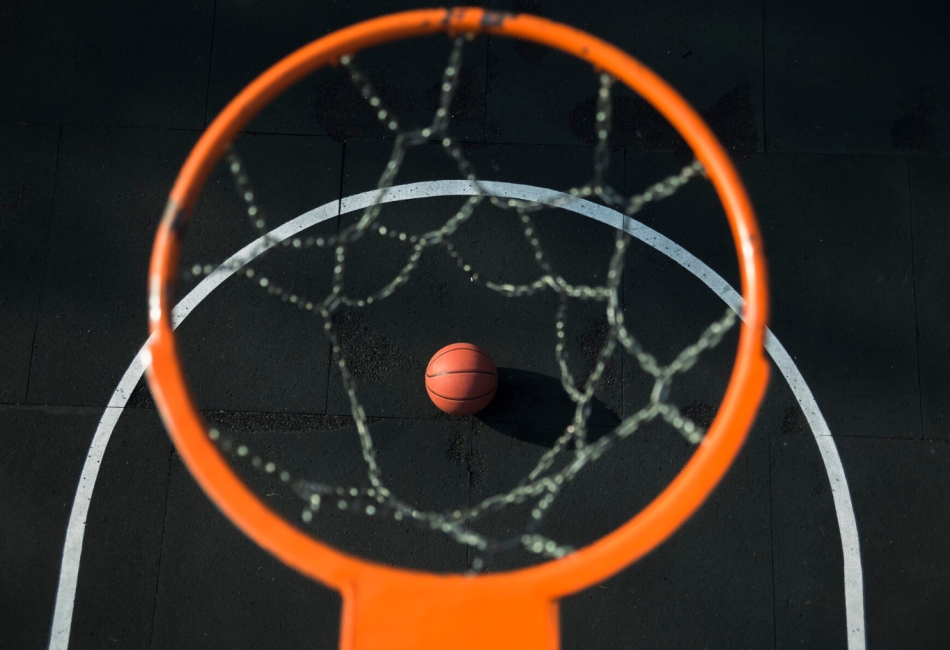And here is the scene: 1980s. Why, it is all big men in the paint, bruiser defenders, and skyhooks that make you shake your head in amazement in the NBA. The three-point line? To most players, it was a circus shot, a last-minute desperation shot, or the kind of thing that you attempt when you were Larry Bird. Jump to the present, and it is almost the air that the game lives on. All teams live or die with it. Practicing it, players do not stop. And coaches use whole game plans based on it. Then how come a simple arc that is drawn 23 feet closer to the basket had an actual effect of completely turning basketball strategy upside down?
The Birth of the Three-Point Line: A Slow Start
The three-point shot did not become a favorite in the NBA by chance. It was launched in 1979, and at that time, it was hardly considered a game-changer, but rather a novelty. In reality, the average of the plays (including passing) in the first season was under three attempts per game. The coaches during that period emphasized taking high-percentage shots near the basket. Why a long-range bomb, when you can slam it home inside and pop up with a specific two points? Basketball betting itself did not significantly influence long-range shooting at that time, as nobody thought it would contribute substantially to the game. Decades later, the analytics revolution emerged, and everything changed.
Analytics Crashed the Party
Data transformed basketball. Teams began to crunch these numbers, and then they discovered something outrageous: 3 points count more than 2 (this is not a big surprise), but there is more to the numbers. This is even when the player may fumble 35 percent of his beyond-the-arc shots, which is statistically better than 50 percent of the shots on mid-range jumpers. What happened? Coaches bent over. Player adjusted. And then, the shot that was initially a secondary thought became the most useful weapon in contemporary basketball.
The Warriors Made It Cool
The teams, such as the Phoenix Suns, in the early 2000s foreshadowed the prospects of the three-point approach, yet it is the Golden State Warriors who brought it to perfection. They made deep threes entertaining with Steph Curry leading the point. It was not only powerful, but beautiful. Asian fans were getting up in the middle of the night to see Curry rain down nearly half-court shots without batting an eyelash. These events are engaging enough to attract interest and reactions on sites like MelBet betting company, where fans have an alternative to relate to the game.
The success of the Golden State had a ripple effect. Unless you were hitting threes, you were falling behind. Even a deep-spacing center like Brook Lopez and Al Horford space the floor today, which is a concept that coaches in the 90s would have snickered at.
Why It Changed Strategy Entirely
Here’s the real kicker: the three-point shot didn’t just add another scoring option—it redefined every role on the court.
- Floor Spacing: Defenses can’t clog the paint anymore because shooters are waiting at the perimeter.
- Positionless Basketball: Big men now shoot threes. Guards crash the boards. Everyone is versatile.
- Faster Pace: More threes mean quicker possessions, which means more scoring opportunities.
In short, the game stretched out. Coaches stopped obsessing over dominating the paint and started building rosters full of shooters who can run, gun, and hit from anywhere.
The Asian Connection
So, why should fans in Asia care about that? Since the waves of the ripple effect of the three-point revolution trickled to the farthest quarters of the basketball community. From Manila to Jakarta to Shanghai, mini local leagues and pickup games resemble the NBA style. Everybody desires to be Steph Curry. Players in the court are taking deep shots, despite their coach yelling, ‘I want a lay-up.’
In Asia, the game of basketball is based on style, and there is no greater statement of style than braving down a shot. Moreover, these highlights cannot be overlooked, as they can be observed through streaming services and social networks. One Curry video, and the next day, half the kids in Seoul attempt logo threes.

The Good, The Bad, and The Ugly
Of course, every revolution comes with its share of ide effects. While the three-pointer made the game faster and more entertaining, it also created some drawbacks:
| Positive Impact | Downside |
| More exciting, high-scoring games | The mid-range game has almost disappeared |
| Positionless, skill-focused play | Over-reliance on outside shooting |
| Gave underdogs a fighting chance | Blowouts when shots don’t fall |
When teams shoot 50 threes a night and miss most of them, the game can get messy. But love it or hate it, this is the NBA now.
The Future of the Three-Point Era
Will the three-pointer remain king forever? Probably not. Basketball evolves constantly. Defenses are already finding ways to counter heavy three-point offenses by switching more and focusing on versatile defenders. But for now, the deep ball is here to stay. Young players across Asia and beyond are growing up with the three as their default shot—not the fallback. Imagine a kid in Bangkok who’s never seen a post-up move but can drain threes with ease. That’s the future. And it all started with one arc that coaches once ignored.



